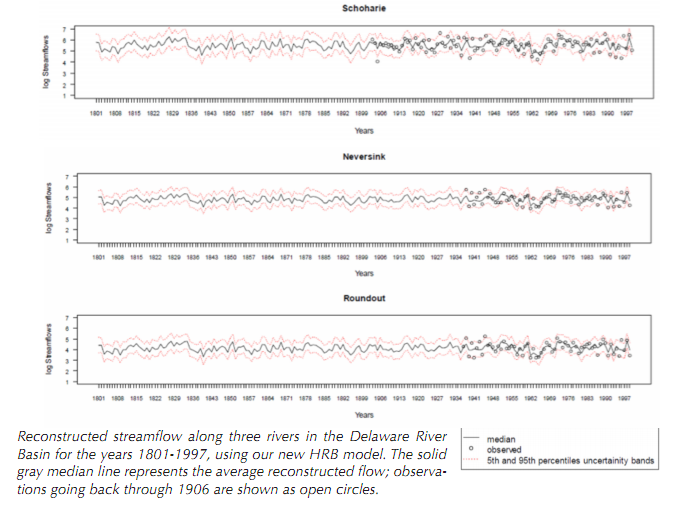- Home
- About
- Stakeholders
- Projects
- Water
- Evaluating reservoir operations and the impacts of climate change in the Connecticut River Basin
- Collaborative development of climate information for the Connecticut River Basin using Shared Vision Forecasting
- Impacts of climate change on the Massachusetts Water Resources Authority water supply system
- Climate information for water harvesting and re-use strategies in urban settings
- Delaware River streamflow reconstruction using tree rings
- Coasts
- Health
- Cross-cutting theme: Climate
- Cross-cutting theme: Vulnerability/Evaluation
- Water
- Library
- Resources
- Seminars
- Contact Us

Delaware River streamflow reconstruction using tree rings
The upper Delaware River Basin System (DRB) is one of the largest water supply systems for the City of New York, supplying nearly 50% of its capacity for the consumptive water use for New York City. Quantitative evaluations of reservoir systems such as the DRB are typically based on historical (short-term) observations that may not fully represent the magnitude and frequency of extreme droughts for the river basin system, and that may under- or overstate the length and severity of the longest drought of record. Reconstruction of the streamflow records, using proxy information such as tree ring data, can provide crucial information for robust long-term planning. To reduce uncertainties for these streamflow reconstructions, we have developed a full probability model (Hierarchical Bayesian Regression, or HRB) that specifies the joint probability distribution for all the observable and unobservable quantities. The risk of droughts of different severity and duration (as perceived from the reconstructed flows) can be assessed statistically through Monte Carlo simulations, relative to current and projected water demand patterns. As a result, reservoir operating rules could be improved, with a better understanding of long-term risks ,and methods to detect changes in climate/streamflow regime.
Investigators: Naresh Devineni, Upmanu Lall, Neil Pederson, Edward Cook

